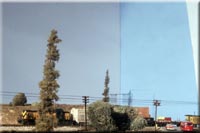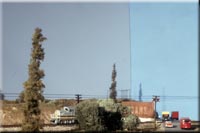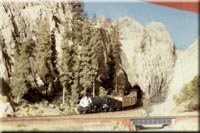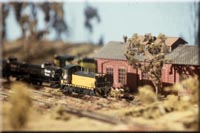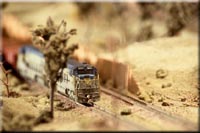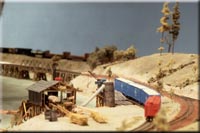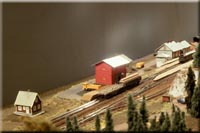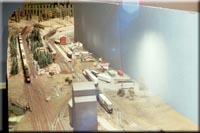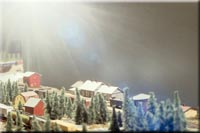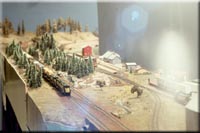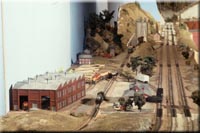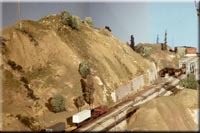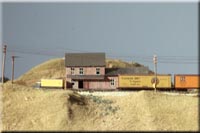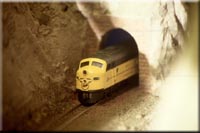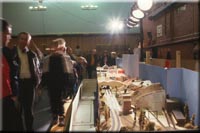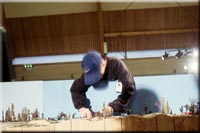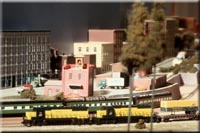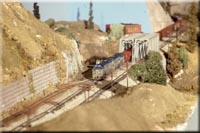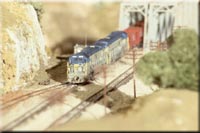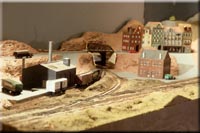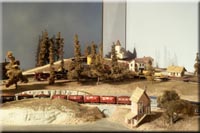C&NW RS1 with a short extra. Paint and grime added by Harald.
That's a BAR BL2 hiding behind the shrubbery. The car's painted
lights and number plates add to the realism.
This is Canyon, the eastern end of the dogbone layout.
Matti's GN mikado has just made it through the loop and is heading back towards
the public again. The trees are made from woodlands foliage on wooden grill
sticks.
Evening at Nohi. The engineer of 1122 has to spot two more
cars at the engine facility before he can leave for the day.
Thomas U30C roaring through a cut on the Nohi module.
The sawmill built by Victor is adding action to the lakefront.
According to the amount of woodchips, it has been quite busy lately.
The freight depot at Bålsta.
Overview over Bålsta. Small station and local freight
depot.
Bålsta. This station is built according to pictures and
plans of the original. The station features a superb control panel. The module
was built by Rolf.
C&NW GP50+GP50+SD40 have an easy match with ~30 cars heading
east. In contrast to the C&NW and SJ, the SLAMRA mainline is mostly right
hand operated.
5 modules, 3 owners, illustrating the N-trak concept. Thomas
built modules with the elevator and the engine facilities. As he is not a
Stockholm resident, his modules are only present at shows.
Aerial view over exH0, a long strech of mainline.
A hot summer day at the sleepy warehouse near exH0. Someone
bettershow up and unload the waggons soon.
E8 popping out of the Canyon tunnel.
A big crowd at the show is the reward for hard work by the club
members.
Running trains requires intervention of the hand from
above sometimes.
Here you can see five of eight yard tracks. Tracks one to three
are used for passenger while tracks four to eight designated are freight
service.
Thomas U30Cs roaring down the main line with heavy merchandise in
tow.
At shows, the public wants to see the trains go round, so we give
them a busy main line.
Switching business at cannery. This is a late 1998 view. Most of
the structures have been relocated and replaced with scratchbuilt ones. The
secenery isn't completed either. The switches in the foreground are in the
western approach of the city, so the module is essential for operating the city.
At shows, the branch line is connected to a hidden staging yard.
The foliage hides the switching action at Gunn.
